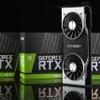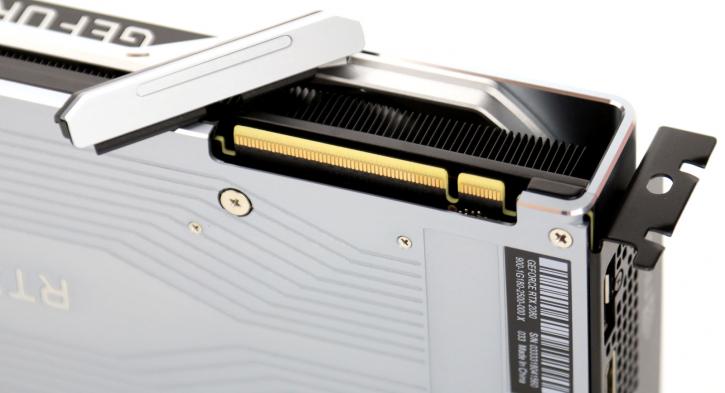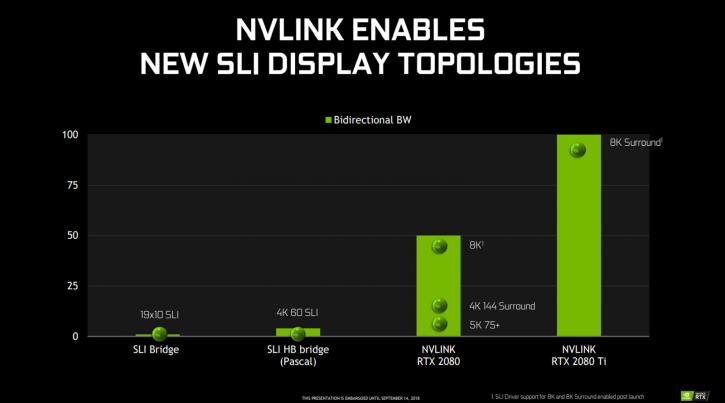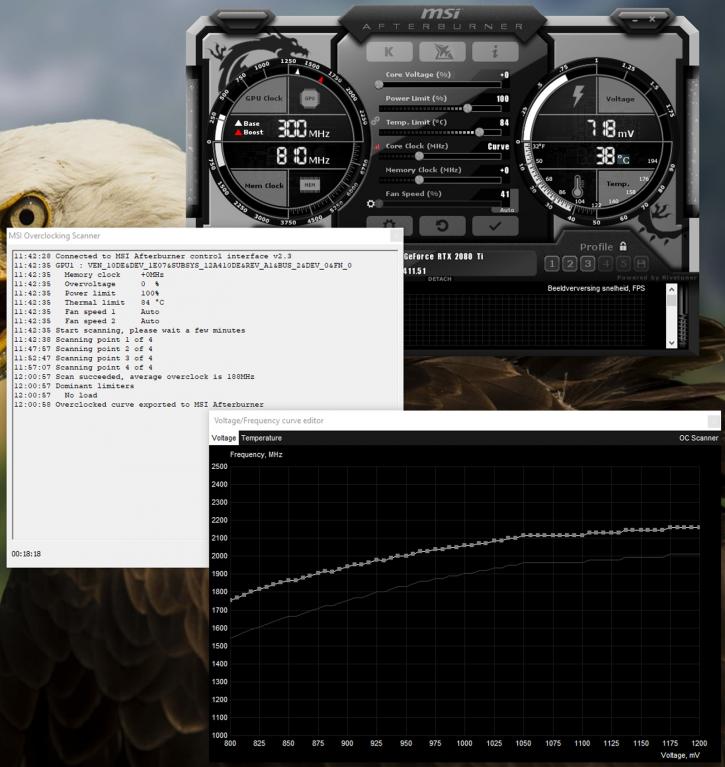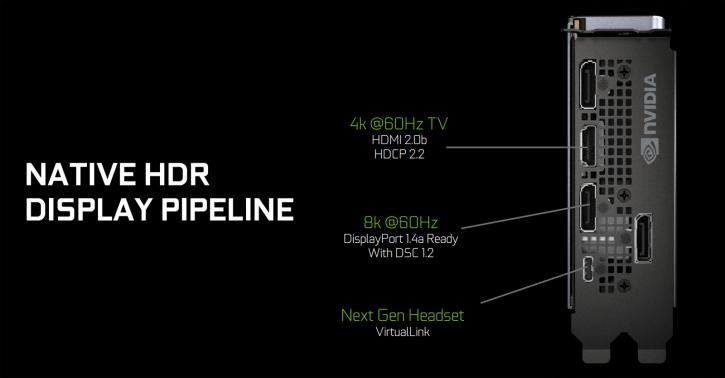NVLINK SLI / Overclocking Scanner and connectors
NVLINK and SLI
Is SLI back? Well, SLI has never been gone. But it got limited towards two cards over the years, and driver optimization wise, things have not been optimal. If you have seen the PCB shots, you will have noticed a new sort of SLI finger, that is actually an NVLINK interface, and it's hot stuff.
In theory, you can combine two or more graphics cards, and the brilliance is that the GPUs can share and use each others memory, e.g direct memory access between cards. Unfortunately, though, the new NVLINK bridge is just used for SLI, there will be no GPU or memory sharing as previously expected. Think of NVLINK as SLI version three. It is just an interface yet many times faster.
For the RTX series, the link is going to be a 50 or 100 GB/sec interface, which is massive in terms of interconnects. We can't compare it 1:1 like that, but SLI or SLI HB passed 1 or 2 GB/sec respectively. One PCIe Gen 3 single lane offer 1 Gb/s, that's 16 GB/sec or 32 GB/sec full duplex. NVIDIA will support 2-way NVLINK support. Currently, only the GeForce RTX 2080 and 2080 Ti will get NVLINK support and that physical connector will be present on those cards. The RTX 2070 and presumably future lower positioned models will not get this super fast multi-GPU to interconnect.
NVLINK bridges are going to cost a spicy 79 bucks, you get 50 GB/sec on the RTX 2080 and 100 GB/sec on the GeForce RTX 2080 Ti. You will need some spacing between two cards, so there will be a 3-slot and 4 slots version available of the NVLINK connector, and remember, there is a 2-way SLI maximum.
Tweaking and overclocking
NVIDIA has been updating NVAPI - NVIDIA is including the NV Scanner API for the developers. You might have seen an example from EVGA already. I can tell you that for MSI afterburner we're also developing the scanner functionality.
So what does it do? Basically, the scanner offers automated overclocking. At certain intervals and voltage frequency curves, the scanner will try to determine a stable overclock, this is presented in a curve and that curve can be applied for your tweak.
While it is a nice idea, the NVAPI scanner will likely not be used much. The registers and variables are defined by NVIDIA, ergo you will only see very small performance increases by using the new feature. Manual tweaks will likely be higher and faster, as this scanner needs to run for 20 minutes. Then again, for the novice with two left hands, it's an extra free 5% or whatever the final value will be. All popular overclocking tools from all brands can make use of it, and we assume that most of them will.
Display connectors and video processing
Let's talk a little about updates towards display connectivity as well as the video en/decoder. First and foremost what you are going to notice is that the traditional DVI port is missing at least on the Founders editions cards. This we think, will be the same for most board partners cards. That means you'll get HDMI and Displayport. DisplayPort will be DP 1.4a ready and can support 8K60 in HDR, that's a resolution of 7680×4320 at 60 Hz and 10-bit HDR. HDMI is at 2.0b, which allows bandwidth up to 18Gbps 4K@50/60 (2160p). Also new is a small USB connector being present at the display connector side, this is for future VR solutions and is called VirtualLink. VirtualLink is a USB-C alternate mode that allows the power, video, and data required to power virtual reality headsets to be delivered over a single USB-C cable and connector instead of a set of three different cables as it was in older headsets. In VirtualLink mode there are six high-speed lanes active in USB-C connector and cable: 4 lanes are used to transmit four DisplayPort HBR 3 video streams from PC to headset, and two lanes are used to implement bidirectional USB 3.1 Gen 2 channel between PC and headset. VirtualLink also requires PC to provide from 15 up to 27 Watts of power.
The video processor also has had a bit of an update and offers an improved video and hardware en/decoder. HEVC 8K30 HDR real-time sees 25% bitrate savings. H.264 up to 15% bitrate savings. Turing GPUs can drive two 8K displays at 60 Hz with one cable for each display. Turing’s new display engine supports HDR processing natively in the display pipeline. Tone mapping has also been added to the HDR pipeline. Tone mapping is a technique used to approximate the look of high dynamic range images on standard dynamic range displays. Turing supports the tone mapping formula defined by the ITU-R Recommendation BT.2100 standard to avoid color shift on different HDR displays. Turing GPUs also ship with an enhanced NVENC encoder unit that adds support for H.265 (HEVC) 8K encode at 30 fps. The new NVENC encoder provides up to 25% bitrate savings for HEVC and up to 15% bitrate savings for H.264. Turing’s new NVDEC decoder has also been updated to support decoding of HEVC YUV444 10/12b HDR at 30 fps, H.264 8K, and VP9 10/12b HDR.
And that's it for this small architecture preview. On the next pages some photos I took of the reference product we have received. Next week, the full performance reviews will go live.
